Archeologists discovered a new stone bracelet, two sharp pins, a marble ring and fox tooth pendants.
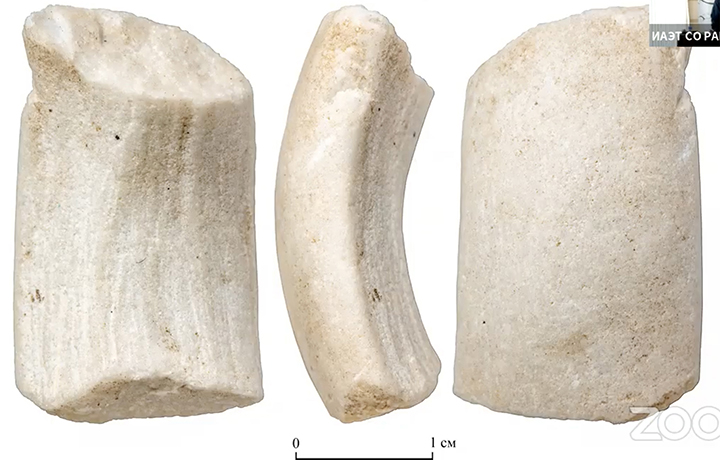
The second stone bracelet, made of white marble at least 45,000 years ago was found in the Denisova Cave in summer 2021. Picture: Institute of Archeology and Ethnography
The summer 2021 season brought a stunning collection of Palaeolithic jewellery from the Denisova cave’s Southern Gallery, including a second stone bracelet.Made of white marble some 45,000 years ago, the new discovery resembles the first stone bracelet found in 2008 near the entrance of the cave’s Eastern Gallery.
This band, made of dark-green mineral called chloritolite, was hailed the world’s oldest stone bracelet, and was believed to be worn only for exceptional occasions.
Even now, thousands of years after it was made, the bracelet mesmerises those who see it close-up with a fast change of colour, shining bright green in sunlight, and showing deeper emerald colour when taken into the shade.
Three parts of the bracelet were found in the upper layer of stratum 11 of the Denisova Cave – while this summer three parts of the white marble bracelet were seen in situ of stratum 11 of the Southern Gallery.



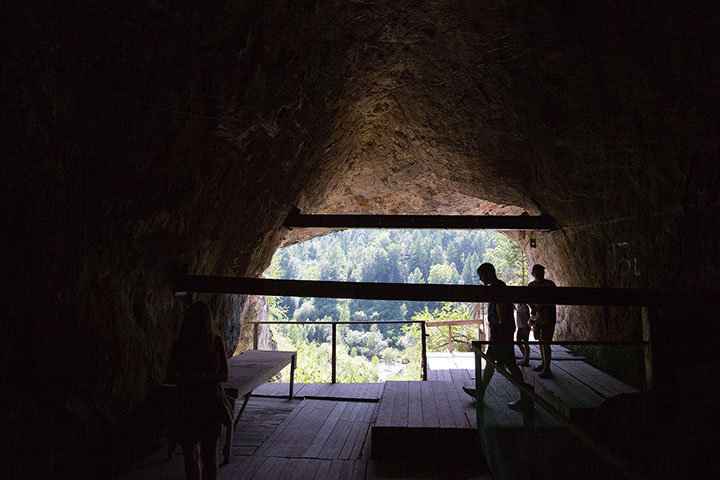
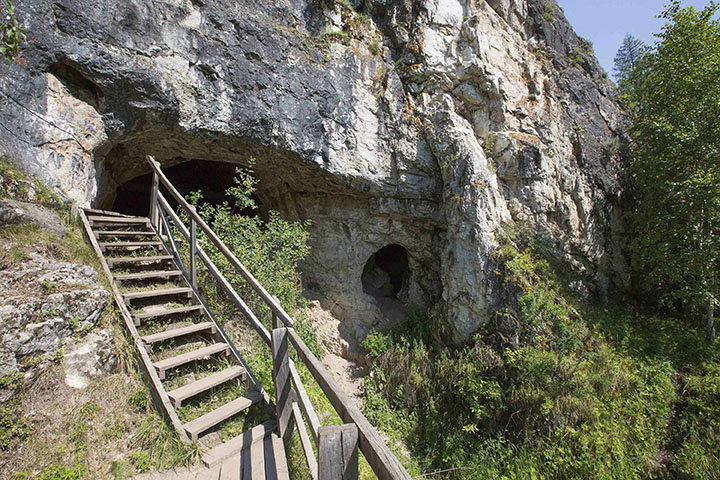
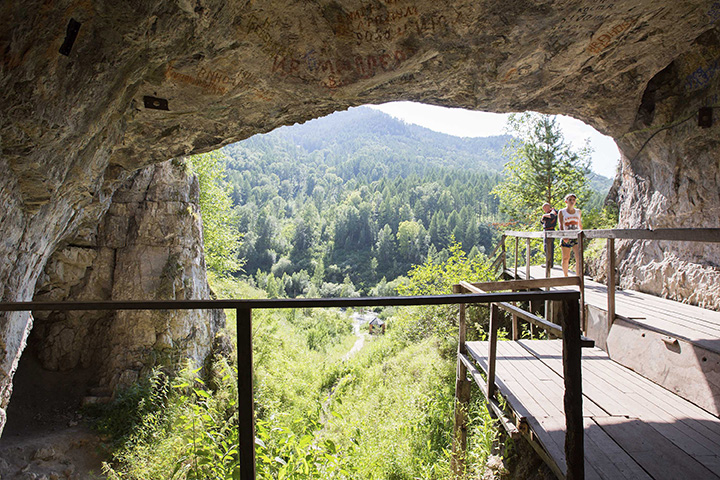 Pictures show the new stone bracelet made of white marble (in situ and after it was extracted); the green chloritolite bracelet, the oldest stone band in the world, and the GVs of the Denisova Cave. Pictures: Institute of Archeology and Ethnography, The Siberian Times
Pictures show the new stone bracelet made of white marble (in situ and after it was extracted); the green chloritolite bracelet, the oldest stone band in the world, and the GVs of the Denisova Cave. Pictures: Institute of Archeology and Ethnography, The Siberian Times
Two sharp pins, made of marmot bone, were also discovered – the first ever for the Denisova Cave, and this area of Siberia.
‘For the first time in the Denisova cave we found the pins, made of marmot’s fibulae, two of them. These artefacts are more thin and fragile than awls, but they have polishing traces on tips and all over the surface. Such pins are widely known in the Palaeolithic of Western Europe, Russian Valley (Sungir), the Trans-Baikal region, but this is the first time we see them in the Altai region’, said Dr Alexander Fedorchenko, archaeologist from Novosibirsk Institute of Archeology and Ethnography.
The pins were used either to stick together pieces of clothing, or possibly to hold up hair, the researchers said. They are still sharp, and look polished and ready to be used more than 40,000 years after they were made.

Two sharp pins, made of marmot bone, were also discovered – the first ever for the Denisova Cave, and this area of Siberia. Picture: Institute of Archeology and Ethnography
Another find is a delicate marble ring, and a recycled ring turned into a pendant by an ancient craftsman.
‘The pendant is interesting in terms of how one type of jewellery was turned into another. A broken ring, with its second part lost, was remade into a pendant’, Dr Fedorchecnko said.
Since 2017 more than 70 personal decorations – quite a variety of rings, pendants, and beads, and now one bracelet – were found in the Southern Gallery of the Denisova Cave.
This summer the collection of pendants was topped up by several new finds, made of – most likely – fox’s teeth, with very fine holes drilled inside them.
There was also a bone needle, sadly broken, among the new discoveries.
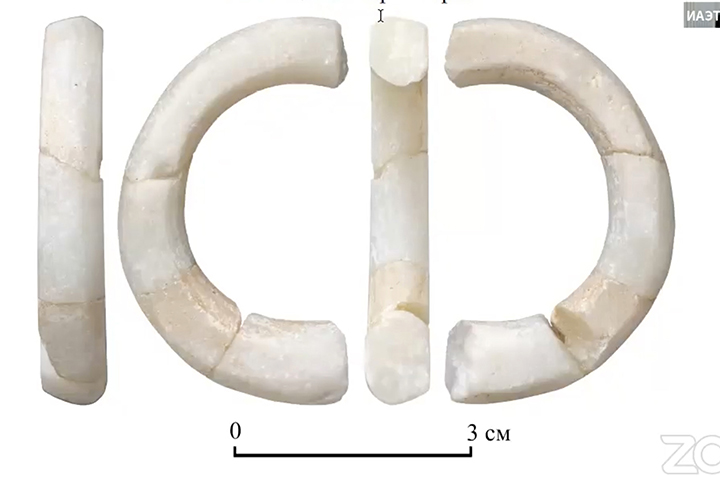

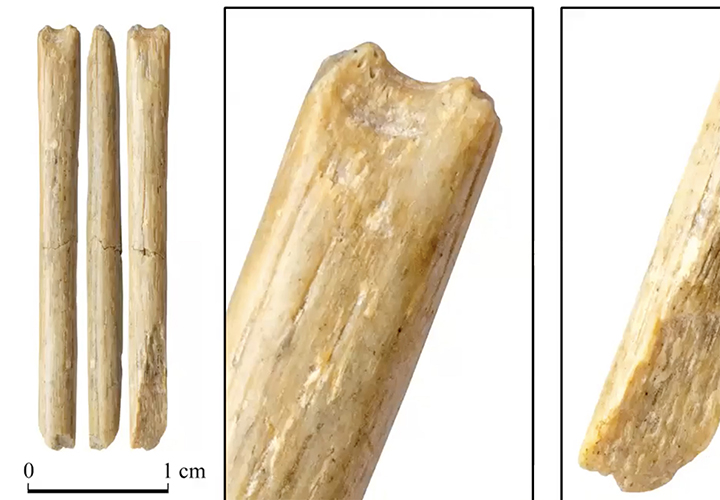
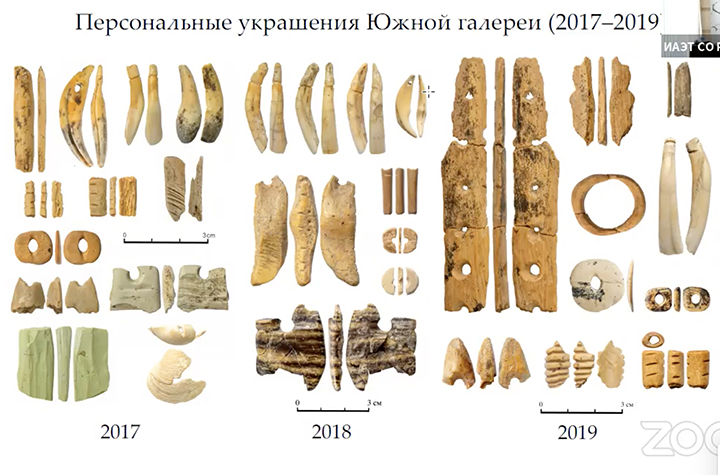
New addition to the stunning collection of the Denisova Cave’s jewellery – the marble ring, pendants made of fox’s teeth, and also items found between 2017-2019. The pictures also show a broken bone needle. Pictures: Institute of Archeology and Ethnography
Five years ago another needle was found inside the Cave. The 7 centimetre (2 3/4 inch) sharp needle with a hole for thread still intact was discovered during summer 2016, and is believed to be the oldest in the world.
All finds at the Denisova Cave are the subject of an ongoing academic dispute as to whether they were made by homo sapiens or the extinct human branch, the Denisovans, whose DNA is prominent in a refuge also inhabited by Neanderthals.
Other artefacts found in the Denisova Cave are a crayon, a mammoth tusk figurine of a cave lion, and the world’s oldest bone needle. Pictures: Alexander Fedorchenko, The Siberian Times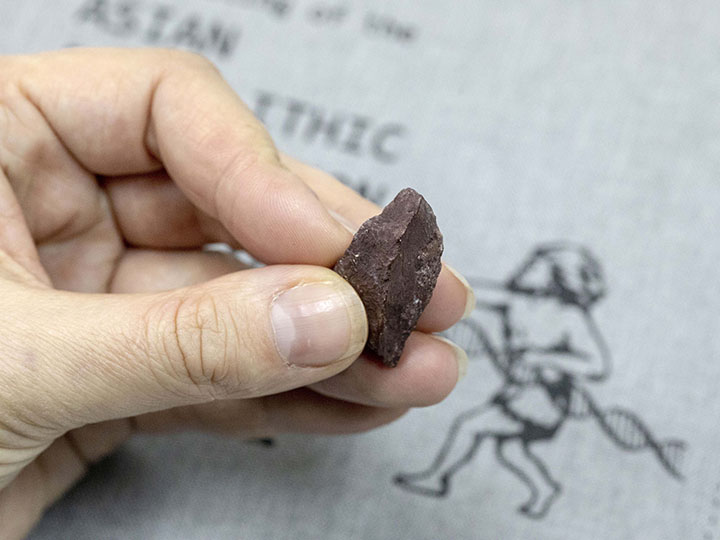
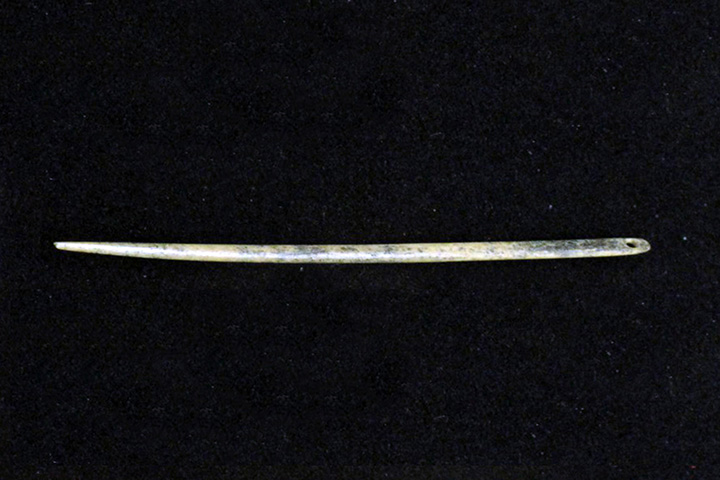
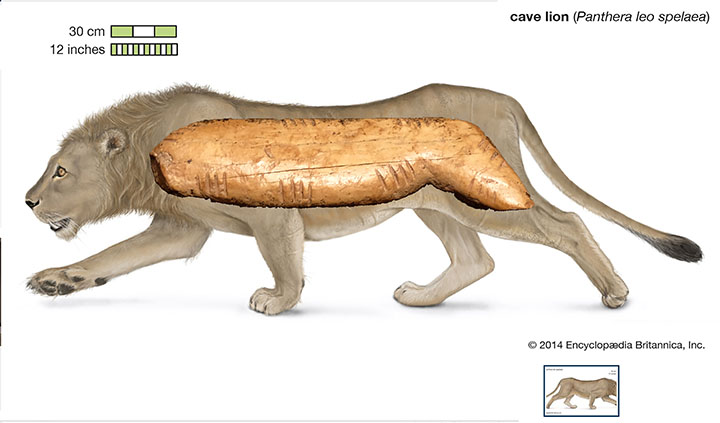
Sources:siberiantimes.com








